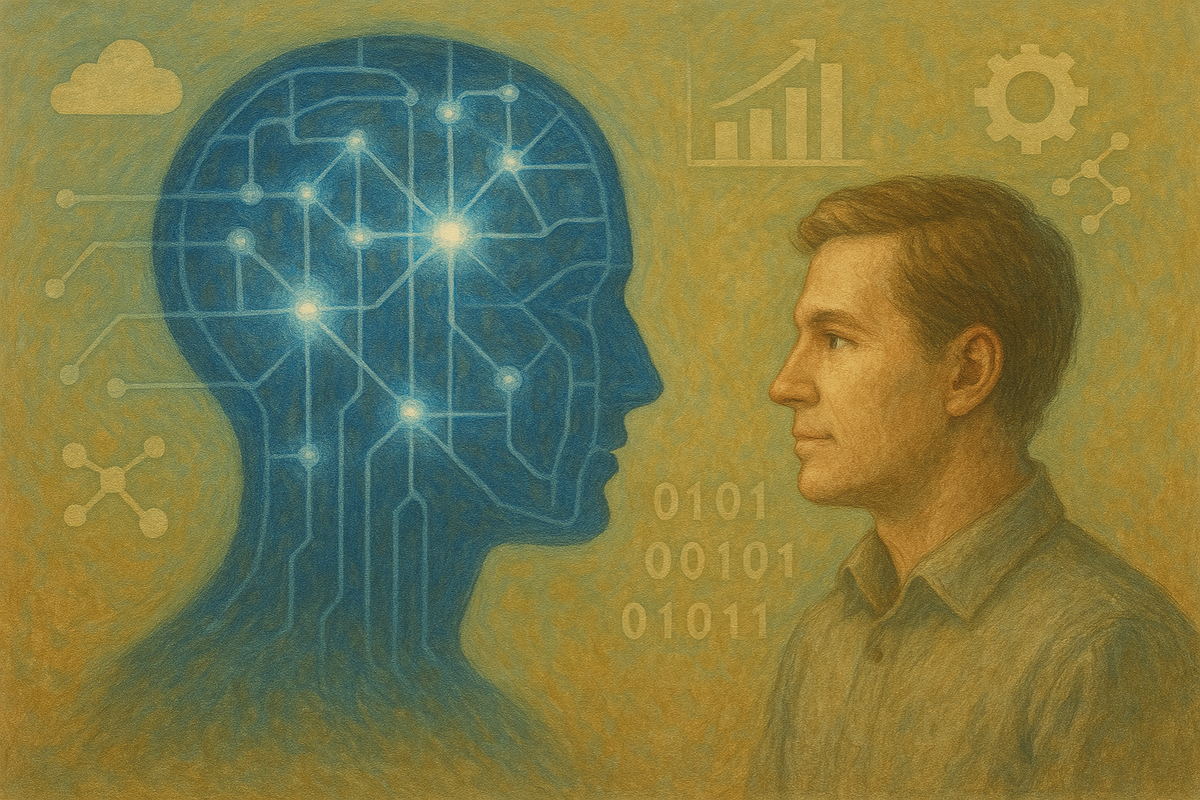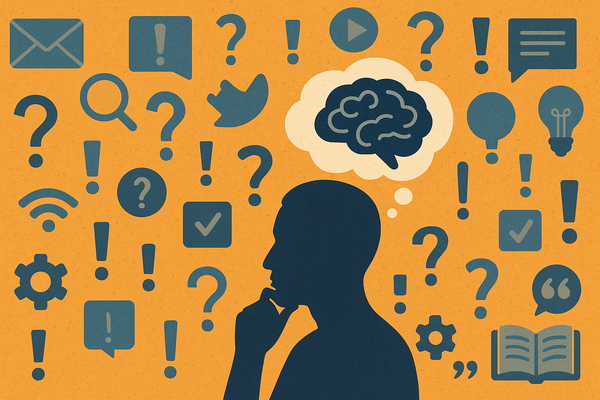Viewpoint: The Transformative Power of AI - A Human-Centric Perspective
At its core, AI is a tool—a remarkably powerful one. It amplifies our abilities, enabling us to focus on what truly makes us human: our creativity, strategic thinking, and empathy.

Artificial Intelligence (AI) is no longer just the stuff of science fiction—it’s an integral part of our reality, actively transforming the way we live, work, and address complex problems. Personally, AI represents much more than just a fascinating technological innovation. It’s a tool, a partner, and a catalyst that, when wielded thoughtfully, can enhance human potential and help solve some of the most pressing challenges facing our world today.
What excites me most about AI is its ability to empower humanity rather than overshadow it. When we anchor AI development in human values—empathy, creativity, and collaboration—we ensure that this powerful technology serves as a force for good. Whether it’s improving healthcare outcomes, making education more accessible, or addressing global challenges like climate change, AI has the potential to unlock possibilities we once only dreamed of.
This perspective fuels my belief in a future where AI doesn’t replace what makes us human but instead complements it. For me, the promise of AI lies in its capacity to free us from the mundane and repetitive, allowing us to focus on what truly matters: connecting with others, solving meaningful problems, and imagining better futures.
However, it’s also clear that such a future doesn’t come automatically. Navigating the risks—like data privacy, algorithmic bias, and potential misuse—is essential. To me, this journey is about responsibility and intentionality. AI’s potential is immense, but only if we prioritize transparency, fairness, and inclusivity as foundational principles.
My optimism stems from countless examples of AI being used to enhance human lives. AI-powered tools already assist doctors in early diagnosis, help educators personalize learning for each student, and enable scientists to combat climate change more effectively. These stories remind me that, at its core, AI is a human invention—shaped by our goals, our creativity, and our vision for the future.
Ultimately, my view of AI is deeply human-centric. It’s not just about advancing technology; it’s about advancing humanity. And that’s a journey I’m excited to be part of, one step at a time, exploring areas such as the following.
Unleashing Human Potential Through AI
At its core, AI is a tool—a remarkably powerful one. It amplifies our abilities, enabling us to focus on what truly makes us human: our creativity, strategic thinking, and empathy. By automating repetitive tasks, AI frees time and mental bandwidth for more meaningful pursuits.
AI in Healthcare: A Catalyst for Precision and Compassion
Consider the healthcare industry, where AI is revolutionizing patient care. Machine learning algorithms now assist doctors in detecting diseases like cancer earlier than ever before. For example, Google’s DeepMind developed an AI system capable of diagnosing breast cancer with higher accuracy than human radiologists. Such tools empower physicians to deliver more personalized and effective treatments, potentially saving countless lives.
AI also extends its impact beyond hospitals. Virtual health assistants powered by natural language processing (NLP) offer mental health support to individuals in underserved areas, providing an empathetic ear and evidence-based advice around the clock.
Transforming Education Through Personalization
In education, AI bridges gaps by tailoring learning experiences to individual needs. Adaptive learning platforms like DreamBox or Khan Academy dynamically adjust content based on a student’s strengths and weaknesses, creating a personalized educational journey. This ensures that every learner, regardless of their starting point, can progress at their own pace.
Teachers such as myself, too, benefit from AI’s administrative capabilities. Automated grading systems and intelligent classroom management tools reduce the administrative burden, allowing educators to focus on fostering creativity and critical thinking.
Combatting Climate Change
AI-powered systems optimize renewable energy production, predict energy demand, and enhance energy storage solutions. Wind turbine operators, for example, use machine learning models to predict power output based on weather patterns, ensuring a steady supply of clean energy to the grid. Meanwhile, AI-driven technologies monitor deforestation and carbon emissions in real time, providing actionable insights for policymakers.
Improving Global Food Security
In agriculture, AI-enabled tools help farmers optimize water usage, reduce pesticide reliance, and maximize crop yields. Blue River Technology, for instance, developed AI-guided robots that can identify and target weeds, significantly reducing chemical use. Such advancements are critical for feeding a growing global population sustainably.
Navigating Risks with Responsibility
While the benefits of AI are vast, its deployment raises legitimate concerns. Issues like data privacy, algorithmic bias, and job displacement cannot be ignored. Addressing these challenges is not just a technological task—it’s a societal imperative.
Building Ethical AI Systems
Transparency, fairness, and accountability must be at the forefront of AI development. Algorithms must be designed and audited to minimize bias and promote diversity. For instance, initiatives like IBM’s AI Fairness 360 toolkit provide resources to detect and mitigate bias in machine learning models, ensuring equitable outcomes across diverse user groups.
Preparing the Workforce
To mitigate job displacement, investment in education and reskilling programs is crucial. Organizations and governments must collaborate to equip workers with the skills needed for an AI-driven economy. Programs like Microsoft’s AI for Workforce aim to provide technical training and career opportunities to underserved communities, ensuring inclusive participation in the AI revolution.
A Vision for the Future
AI is not a replacement for human ingenuity but a partner in amplifying it. Artists use AI to create generative art, blending computational techniques with human creativity. Disaster response teams leverage AI to analyze real-time data, improving rescue operations and resource allocation. In all these examples, AI enhances human capabilities, fostering collaboration between people and machines.
The path forward is not without challenges, but with a human-centric approach, we can build a future where AI uplifts humanity. It’s about striking a balance—leveraging AI’s potential while ensuring that it aligns with our values and priorities.
A Call to Action
The journey of AI is a shared one, reflecting the best of our collective imagination and innovation. It holds the promise of a world where technology empowers us to be more compassionate, effective, and creative.
Let’s embrace AI not as a threat but as an opportunity—a tool for building a future where progress and humanity go hand in hand. Together, we can harness AI’s transformative power to create a better world, one where technology and human values coexist harmoniously.
This is the vision I am committed to advancing—championing the ethical and responsible use of AI while actively opposing its misuse. By promoting thoughtful development and equitable deployment, I aim to ensure that AI serves as a transformative force for good, aligned with the best of human values.
🔴 Viewpoint is a random series of spontaneous considerations about subjects that linger in my mind just long enough for me to write them down. They express my own often inconsistent thoughts, ideas, assumptions, and speculations. Nothing else. Quote me at your peril.





